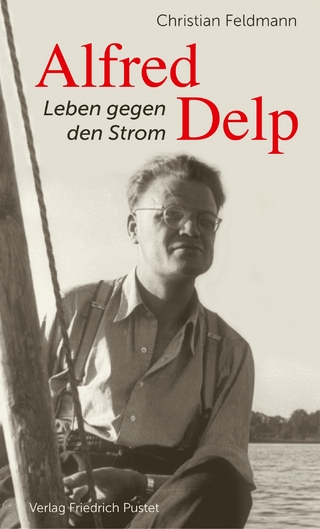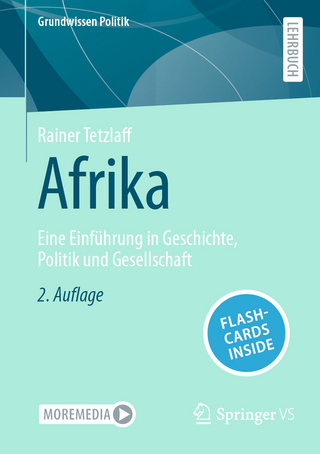
A History of Crimea
Bloomsbury Academic (Verlag)
978-1-350-32800-6 (ISBN)
- Noch nicht erschienen (ca. Januar 2025)
- Versandkostenfrei innerhalb Deutschlands
- Auch auf Rechnung
- Verfügbarkeit in der Filiale vor Ort prüfen
- Artikel merken
Kerstin S. Jobst examines the complex history of the multi-ethnic and pluri-religious Crimea, and not only from a political perspective. Jobst deals with the manifold cultural and historical interdependencies that are central to the territory. The book presents myths and legends about the Crimea, as well as the various peoples for whom the Crimea was a settlement and transit area and who shaped the fate of the peninsula. These included Greek colonists, Eurasian nomads, Crimean Tatars, and others. A History of Crimea shows the importance of Crimea as a place of early Christianity, but also as a contact zone between different religions – Christianity, Judaism, and Islam. It also emphasizes the role of the peninsula as a peripheral area of various great powers – the Roman Empire, Byzantium, the Golden Horde, and the Ottoman and Russian Empires.
With this overview of 2,000 years of Crimea’s history, Kerstin S. Jobst places the most recent explosive events on the peninsula in their historical context and shows how the Crimea has become for the majority of Russians a highly emotionalized space since the first Russian annexation in 1783.
Kerstin S. Jobst is Professor for the Societies and Memory Cultures of Eastern Europe at the Institute for East European History at the University of Vienna, Austria. Her research interests include the History of East Central and Eastern Europe, the Black Sea region, the Caucasus, the Russian Empire and the Habsburg Monarchy, as well as comparative empires and colonialism studies.
Preface
1. Introduction
2. Crimea as a Space of Myths and Legends
3. On Greeks, Scythians, and Others
4. New Actors: Sarmatians and Others
5. The Mithridatic Wars: Crimea under the Rule of Rome
6. On Goths, Huns, the ‘Migration Period’ and Its Impacts on Crimea
7. Crimea as a Place of Early Christianity
8. Crimea between the Eastern Roman Empire, the Crimean Gothia, and the Khazar Empire
9. Crimea between the Kievan Rus’, Byzantium, and Semi-Nomadic Groups from Eurasia
10. On Cumans, Polovtsians, and Kipchaks
11. The Fourth Crusade (1202-1204) and its Impact on Crimea
12. Pax Mongolica, Trade, Slavery, and the ‘Black Death’
13. The Principality of Theodoro and a Lithuanian Intermezzo
14. The Crimean Khanate: The Beginnings
15. The Establishment of the Crimean Khanate
16. The Crimean Khanate: Ottoman Suzerainty and an Eastern European Equilibrium
17. Slavery and the Topos of the Crimean Tatar Warrior
18. The Nogays as a Factor in the Early Modern Crimean History
19. The Cossacks as a Factor in the Early Modern Crimean History
20. Internal Conditions in the Crimean Khanate
21. In the Run-Up to the Annexation: The Strengthening of the Russian Empire, the ‘Greek Plan’, and the Treaty of Küçük Kaynarca of 1774
22. An ‘Independent’ Crimean Khanate and the Russian Annexation, 1774-1783
23. The First Decades of Russian Rule in Crimea
24. The Multi-Ethnic and Multi-Religious Crimea under Tsarist Rule: The Tatar Population and Gender Relations
25. The Multi-Ethnic and Multi-Religious Crimea under Tsarist Rule: ‘Old’ and ‘New’ Inhabitants
26. The Crimean War: A ‘Modern’ War?
27. The Crimean War: The Developments on the Peninsula
28. After the War: Crimea Between 1856 and 1905
29. The Crimean Tatar Population after the Crimean War
30. The Revolution 1905 and Its Consequences in Crimea
31. World War I and the Revolution in the Periphery: The Crimean Peninsula, 1917-1920
32. The Crimean Peninsula, 1920-1941
33. Crimea during World War II
34. The Deportations 1944/45 and Their Background
35. Crimea after World War II
36. The Dissolution of the Soviet Union: Crimea as Part of Independent Ukraine
37. Russian Again?! Crimea after the Second Annexation of 2014
Bibliography
Index
| Erscheint lt. Verlag | 23.1.2025 |
|---|---|
| Zusatzinfo | 2 Maps |
| Verlagsort | London |
| Sprache | englisch |
| Maße | 156 x 234 mm |
| Themenwelt | Geisteswissenschaften ► Geschichte ► Regional- / Ländergeschichte |
| Sozialwissenschaften ► Politik / Verwaltung ► Europäische / Internationale Politik | |
| ISBN-10 | 1-350-32800-6 / 1350328006 |
| ISBN-13 | 978-1-350-32800-6 / 9781350328006 |
| Zustand | Neuware |
| Haben Sie eine Frage zum Produkt? |
aus dem Bereich


